Even if you watched ‘Dune 2’ on the biggest screen you could find, there is a lot happening behind the scenes that makes the film feel this epic. From unusual camera choices to secret cameos, the production pulled together a mix of practical builds, new music, and careful worldbuilding to bring Arrakis and its enemies to life.
These details are not hidden Easter eggs. They are the nuts and bolts of how the movie was made and released. If you want to know where the sand came from, why some scenes look unlike anything else in the series, and how the cast trained, this list breaks down the essentials in clear and simple terms.
The Giedi Prime sequences used an infrared approach
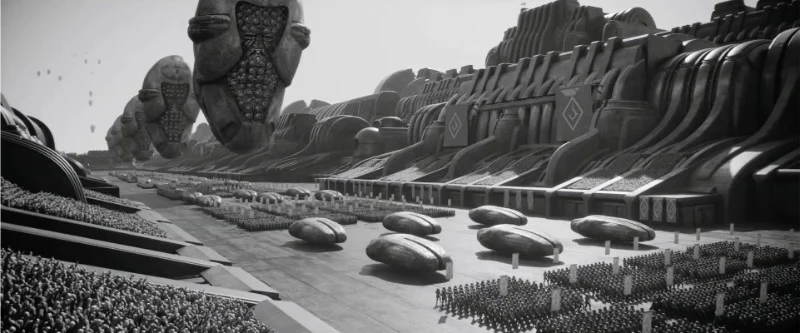 Warner Bros.
Warner Bros.The scenes set on Giedi Prime were captured with a monochrome camera fitted for infrared sensitivity. This choice created the high contrast look where skin tones and fabrics react to light in unusual ways. The method gave the Harkonnen homeworld its stark appearance without relying on heavy digital color tricks.
Production ran tests to dial in exposure and costume materials that would respond well to this light. Makeup and fabric departments adjusted pigments so faces and clothing would register correctly on the sensor. The result is a consistent visual language for the planet across interiors and large arena shots.
Full scale sandworm segments were built for the desert
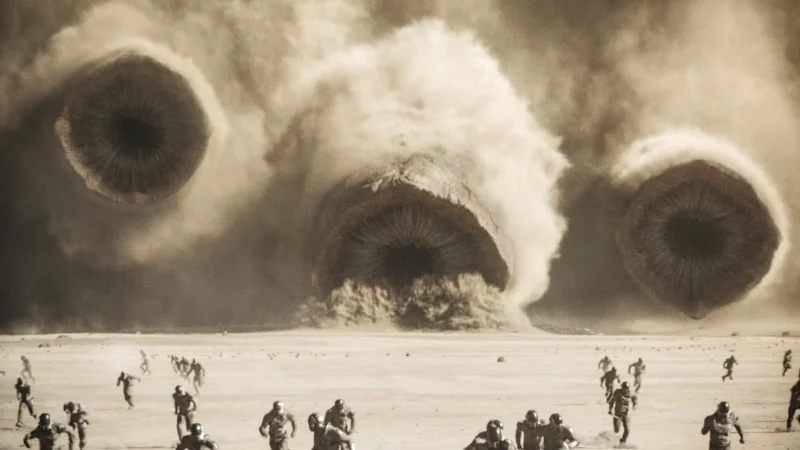 Warner Bros.
Warner Bros.The team constructed large practical sections of a sandworm that could support performers and camera rigs. These pieces allowed actors to interact with real surfaces while riding and boarding, which helped the stunt team design actions that feel grounded.
Special effects crews engineered the rigs to move and vent sand in controlled ways. Art department and props developed layered textures so close ups would hold detail. The practical build worked alongside digital extensions for full body views in wide shots.
The stillsuits were redesigned for mobility
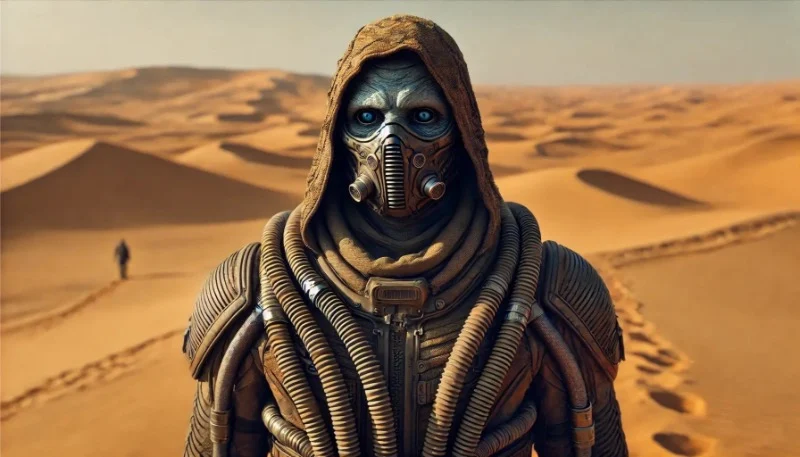 Warner Bros.
Warner Bros.Costume designers updated the stillsuit pattern to allow bigger range of motion for running, climbing, and riding. Panels and seams were shifted so harnesses could be worn underneath without creating bulk. The materials mix balanced breathability for desert shoots with durability that could handle stunt repetition.
Multiple versions of each suit were produced for different tasks. Lightweight hero suits were made for dialogue scenes. Reinforced versions were made for stunts and wire work. Weathered sets were kept on hand so continuity matched the story’s harsher environments.
The production returned to real deserts for Arrakis
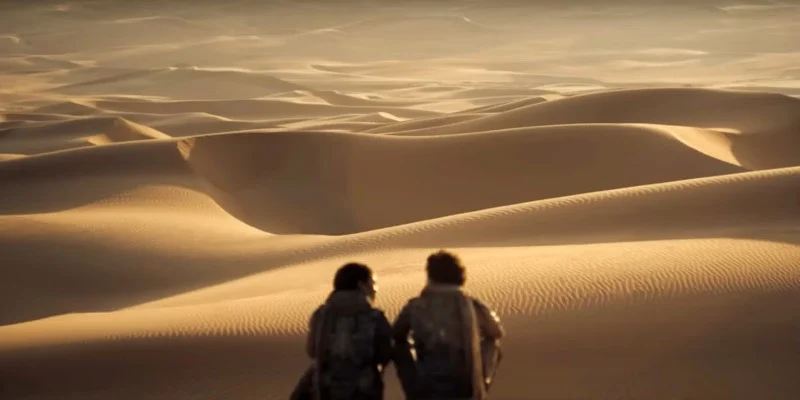 Warner Bros.
Warner Bros.Exterior Arrakis work used desert locations with wide horizons and consistent sand textures. Crews scheduled shoots around seasonal winds to keep dunes readable and to protect equipment. Local services supported transportation, shade structures, and dust control to keep the set safe.
Interior work and complex builds were handled on soundstages. This split let the team capture long lens desert plates outdoors and then connect them to controlled practical sets. The approach kept lighting continuity while giving actors stable footing for fight choreography.
Hans Zimmer wrote new themes to expand the sound of Arrakis
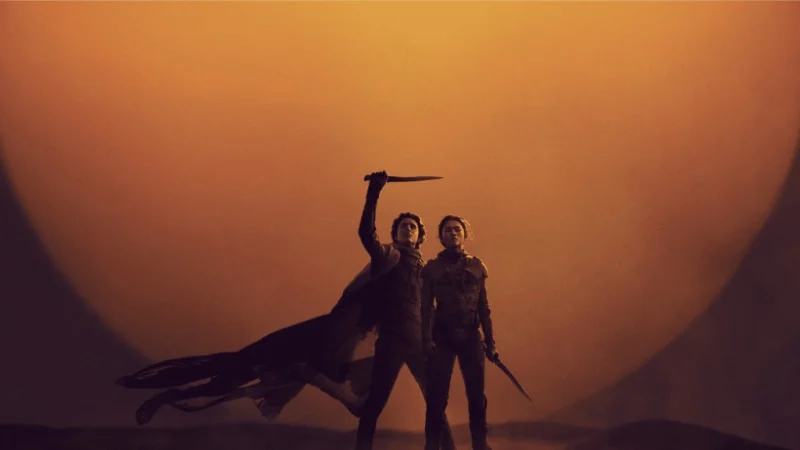 Warner Bros.
Warner Bros.The composer brought back motifs from the first film and added new melodic lines tied to Fremen culture and to rising conflict. The score layers vocals, deep percussion, and extended range winds to create a low end pulse that carries through battles and desert travel.
Recording sessions captured both large ensemble cues and intimate textures used for visions and quiet scenes. The mix team shaped the soundtrack so the music sits with the roar of sand and the thrum of machinery without crowding dialogue. The result supports the film’s scale while keeping character moments clear.
There was a secret cameo connected to the Atreides line
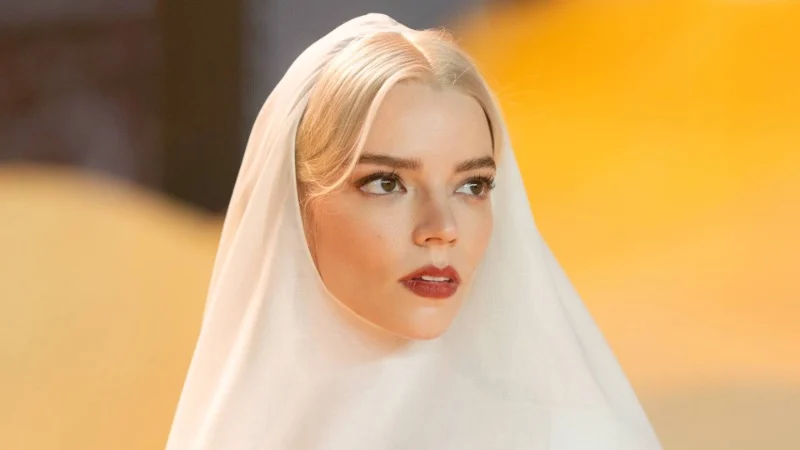 Warner Bros.
Warner Bros.A surprise appearance ties into Paul’s visions and the future of House Atreides. The role was kept off early marketing materials and was filmed with a small unit to reduce visibility. This allowed the reveal to land during release without advance credit placement.
The cameo scenes were integrated through vision sequences and careful editing. Costuming and design matched established Atreides iconography so the connection reads immediately. The footage was graded to sit with the film’s dreamlike imagery rather than the harsh look used for other worlds.
The gladiator arena was planned around stunt safety first
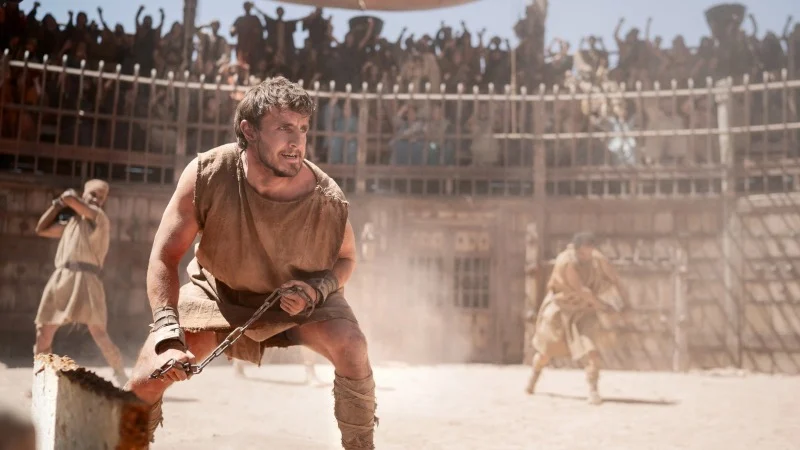 Warner Bros.
Warner Bros.The Harkonnen arena set was engineered with fall zones, anchor points, and clear paths for camera operators. Stunt coordinators mapped beats with foam rehearsals before switching to the finished surface. This process protected performers while keeping movements aggressive and fast.
Blade work combined broad stageable swings with quick hand fighting that reads clearly at distance. Weapon props were built in multiple weights for training and for camera. Rubberized versions were used for contact beats. Metal hero versions were used for close ups and sound.
The film expanded its IMAX footprint across key action
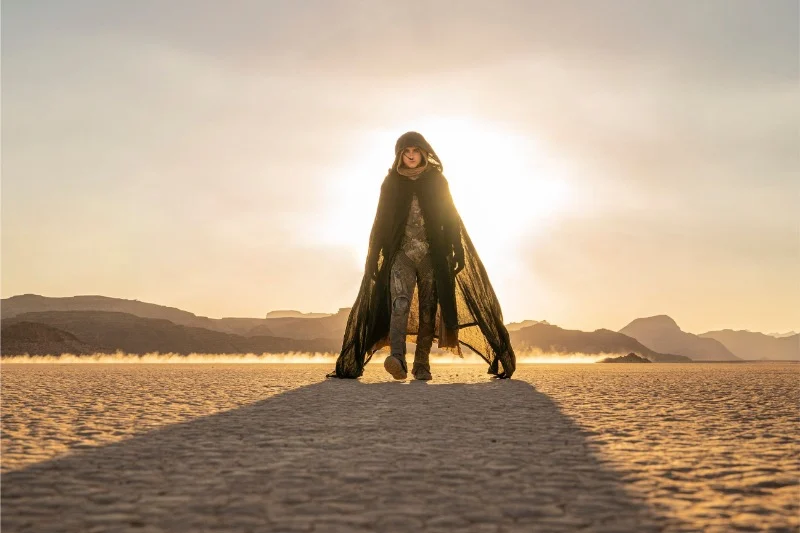 Warner Bros.
Warner Bros.Large format presentation was planned during preproduction so set sizes and camera placements could fill tall frames. Action beats and aerial shots were blocked for open top compositions that benefit from IMAX screens. This planning reduced cropping between formats and kept geography readable.
Finishing teams delivered sequences with variable aspect ratios to match exhibition. The workflow ensured that sound design and visual effects lined up precisely with the larger image. The approach gave audiences more vertical information during set pieces without breaking continuity in standard theaters.
The release moved dates due to industry strikes
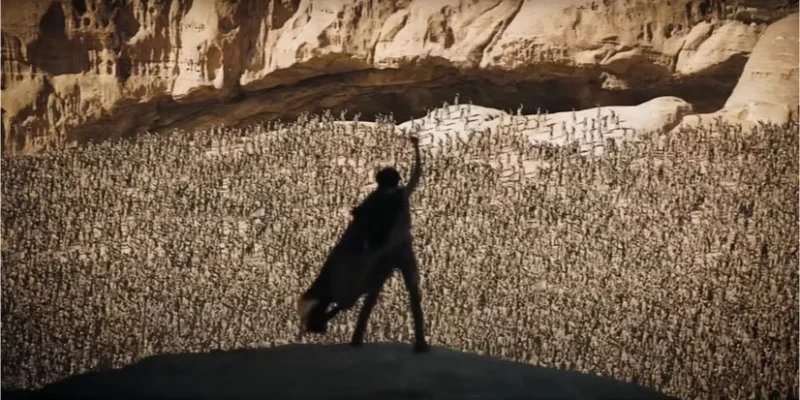 Warner Bros.
Warner Bros.The film shifted from its original late year window to a spring release after industry labor actions. The change allowed the cast to participate in promotion once agreements were reached. It also gave theaters room to stage premium format runs across more weeks.
Marketing adjusted trailer drops and outdoor campaigns to match the new calendar. The rollout prioritized premium screens early, which supported strong large format ticket share. The schedule placed the film in a period with fewer direct sci fi competitors.
Cast training focused on desert movement and blade control
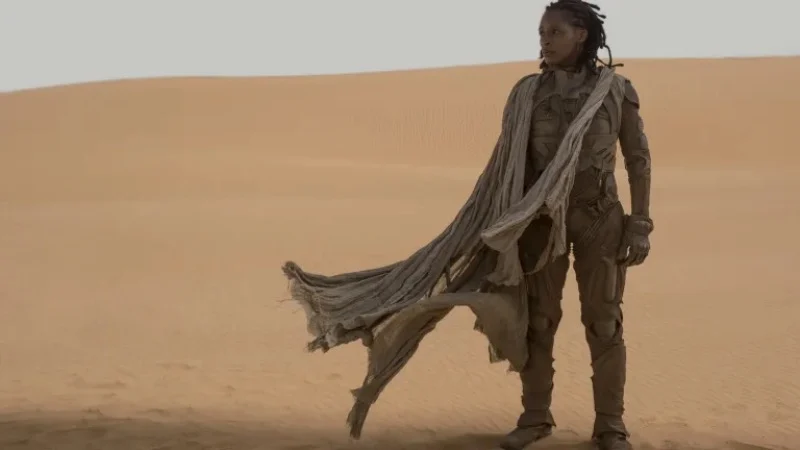 Warner Bros.
Warner Bros.Actors trained on footwork designed for sliding sand and for quick direction changes on uneven ground. Movement coaches taught weight shifts that conserve energy in soft surfaces. This work shows up in long shots where characters travel at speed without sinking steps.
Fight training emphasized short blade timing and partner spacing that would read under flowing costumes. Rehearsals moved from gym floors to sand pits to replicate real conditions. The progression kept rhythm tight while preparing the cast for wind, heat, and equipment layers.
Share the one detail that surprised you most in the comments.

.jpeg)

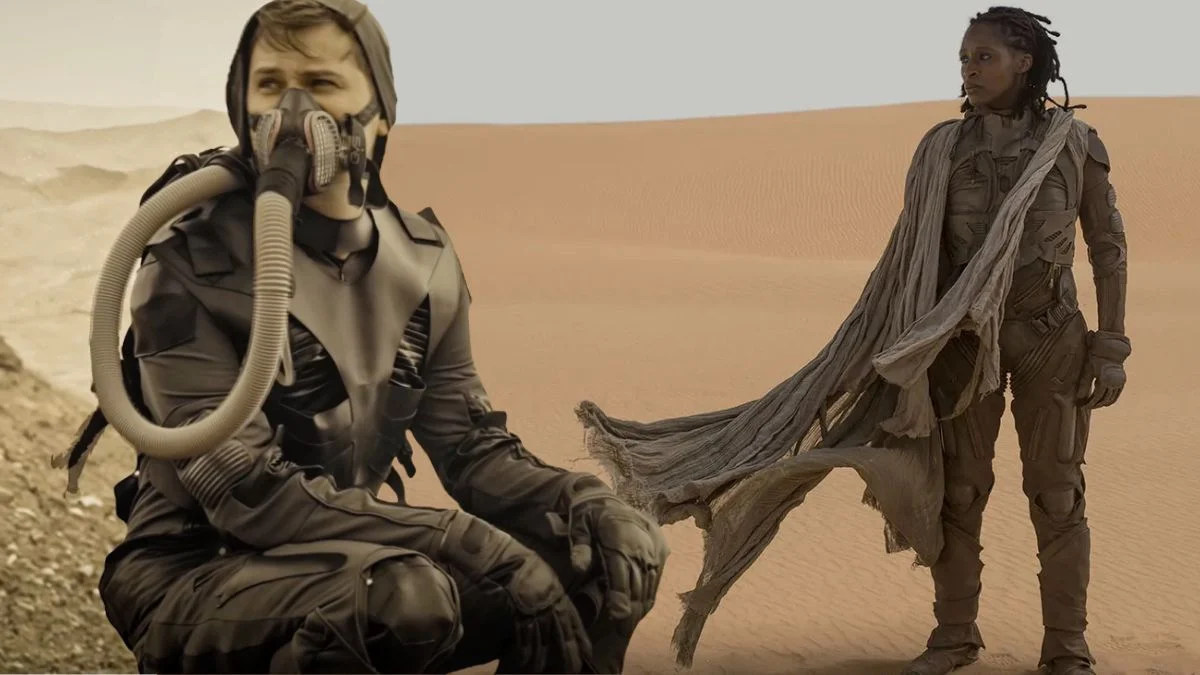

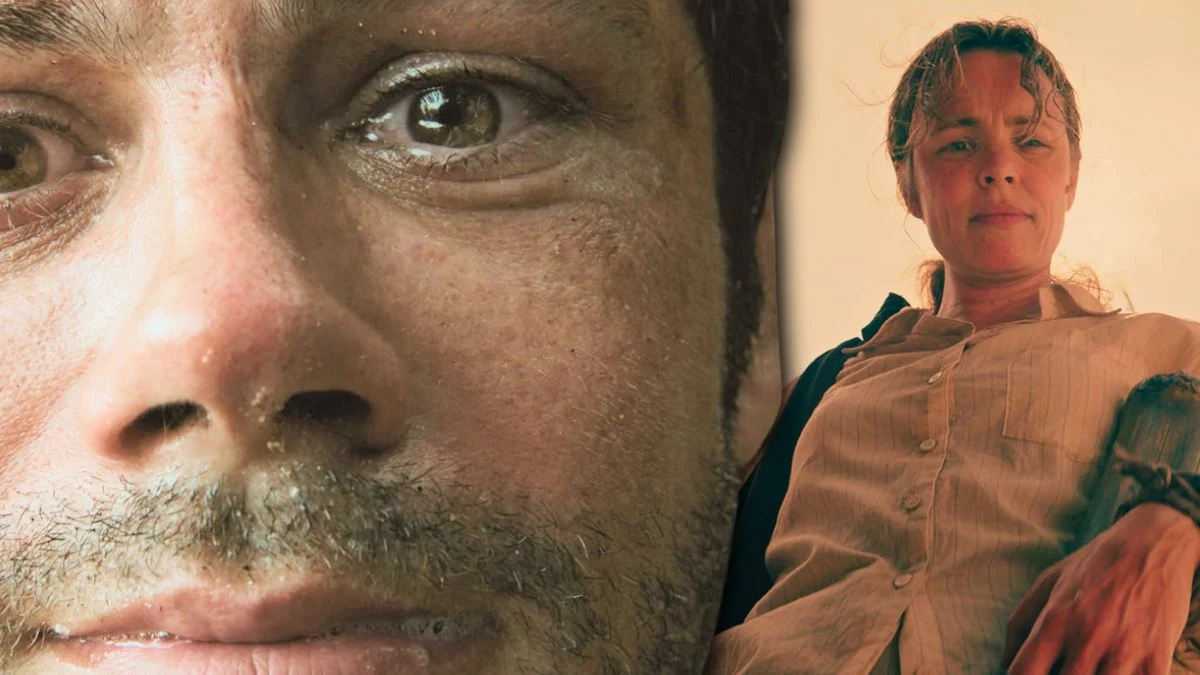
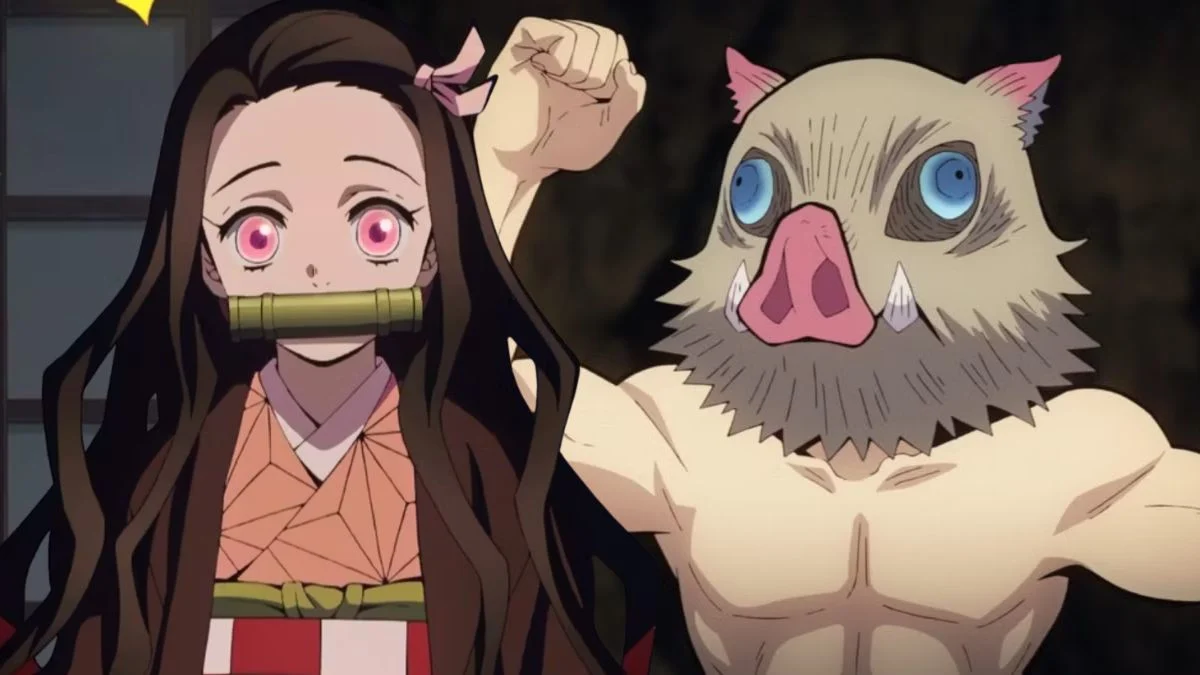


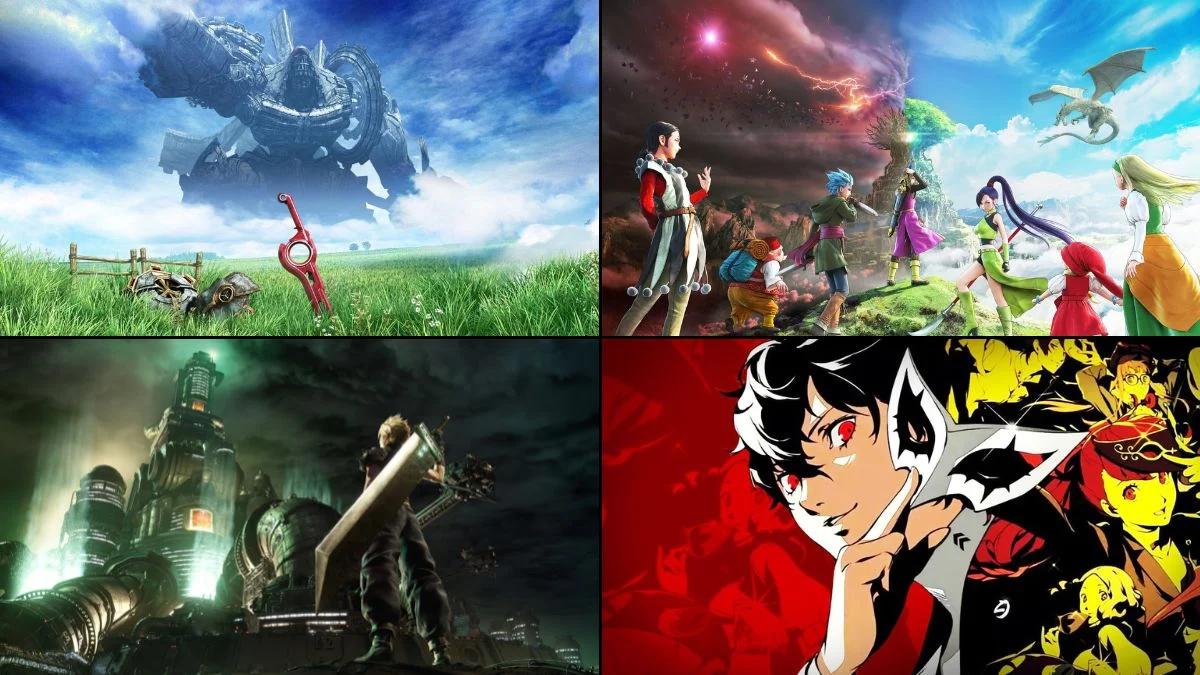



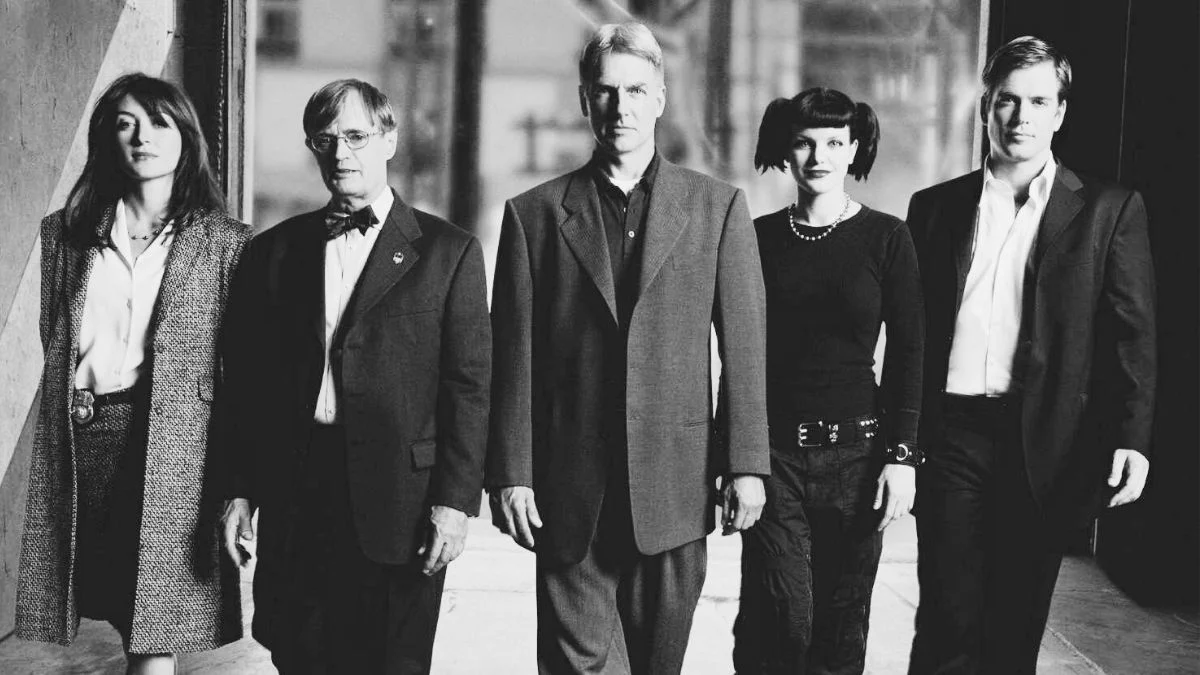
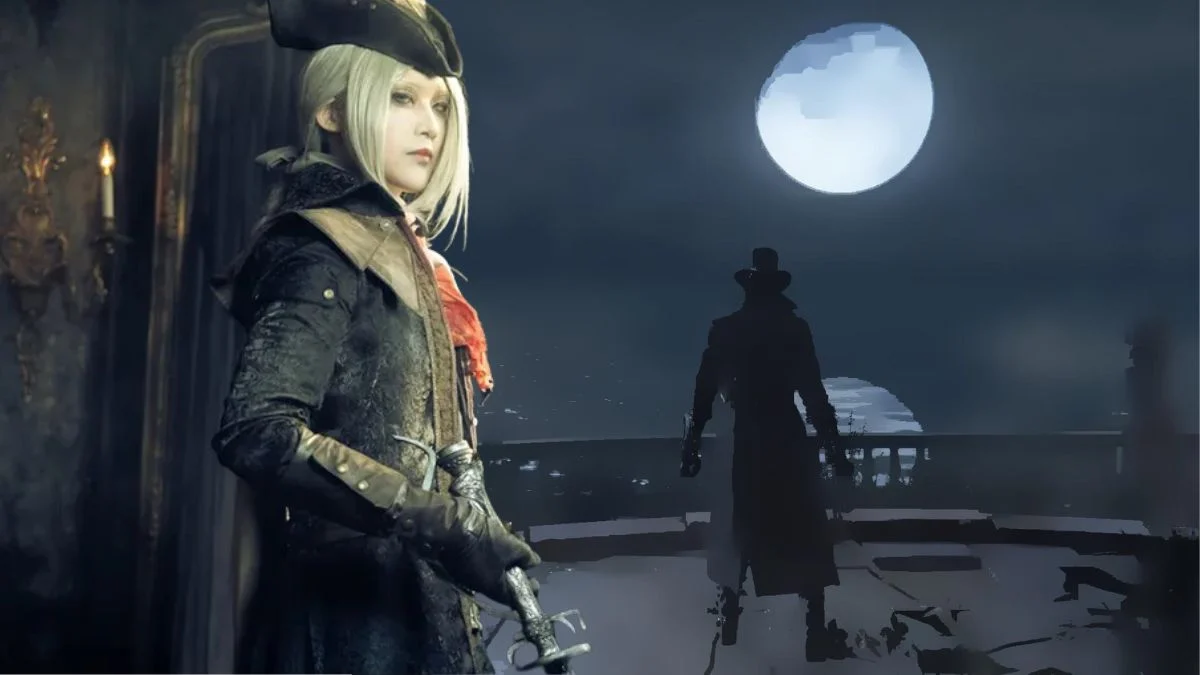










.jpeg)













 English (US) ·
English (US) ·